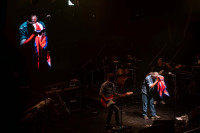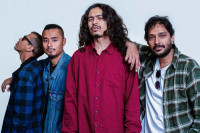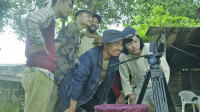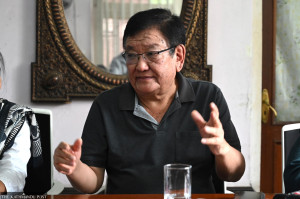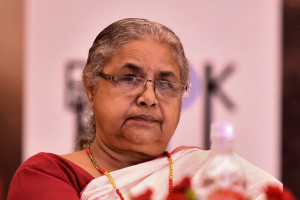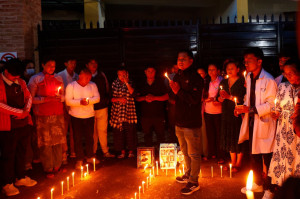Entertainment
Stand-up comedy on the rise
Sarwanam Theatre in Kalikasthan saw a different kind of show over the weekend.
Sarwanam Theatre in Kalikasthan saw a different kind of show over the weekend. Performing on stage were not actors perfectly on cue but rather rabble-rousing stand-up comedians performing sets replete with sharp wit and impromptu comebacks. After becoming regular fixtures at open mics and comedy nights at restaurants and bars in Kathmandu, the sold-out show at Sarwanam felt cathartic—stand-up comedy has arrived in the Capital, and it is here to stay.
Organised jointly by Nep-gasm and the event-managing company Celebrity Management Nepal, the show saw performances by up-and-coming stand-up comedians Lekhmani Trital, Doresh Khatiwada, Ruja Ojha, Saroj Bhandari and Roshan Subedi, in what was a sharp departure from performances in tightly-packed, smoke-filled bars.
Aayush Shrestha, a comedian whose routine on Nepal-India-China relations and inter-caste dynamics in Nepal went viral last month, was also in attendance, though not as a performer but as a member of the cackling crowd.

Speaking about why stand-up comedy has become so popular in the Valley, Shrestha said, “Nepal has a great market for comedy. If you think about it, Nepal’s biggest stars are comedians—think Maha Jodi, Dhurmus Suntali or Deepashree Niraula or Deepak Raj Giri. It has so many problems, so many contradictions and so much diversity; you’ll never run out of material to work with. What has now happened perhaps is that the way we talk about it has changed.”
If Nepal always has had a soft corner for comedic entertainers, the recent boom in internet penetration has not only meant that Maha Jodi or Tito Satya episodes are now readily available at your fingertips but also that the George Carlins, Trevor Noahs and Sarah Silvermans have exploded onto the urban consciousness. This, Shrestha points out, has given young comedians like him a new voice—one that has pushed them to move beyond the expressive, physical routines that had become the mainstay of Nepali comedy, into a more verbal and conversational strain of comic routines.
“You might call it a Zeitgeist of sorts,” Shrestha says, “The popularity of Indian stand-up acts had already created a receptive audience base. And each successful routine, whether in bars or shows in theatres, gives us the confidence to push our jokes, our narratives, further.”
Echoing the same sentiment, organisers of the event on Saturday said that theatres can now be developed not just as a place to perform plays but a multi-functional venue that can also double up as an intimate setting for an evening of stand-up comedy. And given the sold-out crowds that thronged to the theatre for this one-off show, they say that more events of the same ilk will be on offer in the near future.




 21.12°C Kathmandu
21.12°C Kathmandu